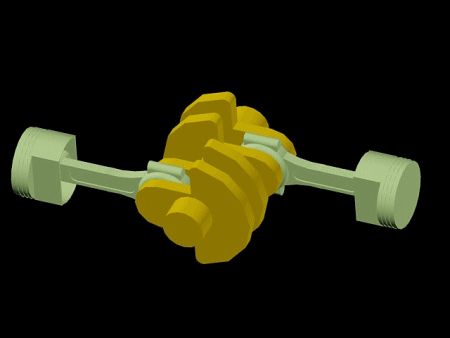|
|
Opposed Two-cylinder Engine

Function
The two-cylinder opposed cylinder engine should distribute empty strokes steadily and compensate at the same time the moving masses optimally. In earlier times, this engine type was used for passenger cars (e.g.,
the Citroen 2 CV), nowadays it is predominantly applied by a certain famous Bavarian motorcycle manufacturer (BMW).
How it works
The opposed cylinder engine, or Boxer engine, received its name from the fact that two opposite pistons move like boxers in a ring, towards and away from each
other. It is also called
counterrunner-engine. The negative influence of the mass forces is thereby avoided. They are common, e.g., for the
in-line two-cylinder four-stroke engine. Most often, the crankshaft is just double-beared.
The vibrations cannot be
eliminated fully by the staggering of the two cylinders. Therefore, there are opposed two cylinder engines with
equaliser shafts. The advantage of the low center of gravity is not fully exploited in motor cycles, because the engine must
be arranged at a certain height to allow sloping positions in curves. The engine control is complicated due to the
higher number of revolutions with motorcycle engines. Per cylinder, one overhead camshaft has to be controlled. Additionally, a chain drive directly from the crankshaft calls for a twice as big wheel in the cylinder head,
increasing the construction volume. BMW solves this problem by using an intermediate shaft below the crankshaft.

|
|